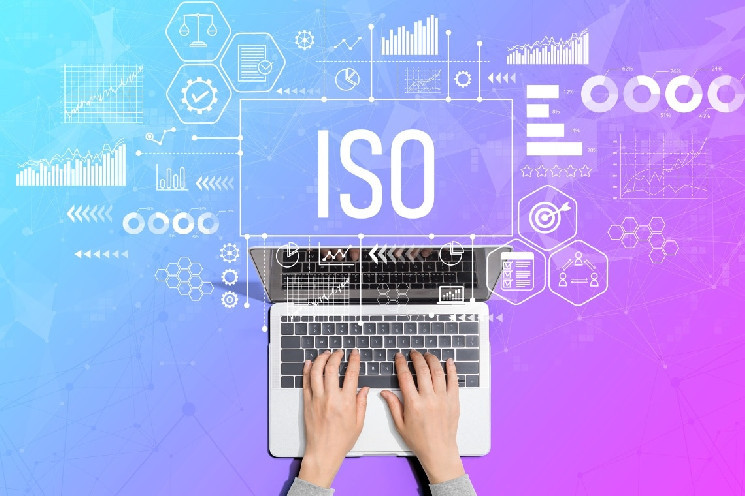ISO 20022 is an ISO standard for electronic data exchange between financial institutions.
The standard covers financial information that is transferred between financial institutions, such as payment transactions, securities trading and settlement information, credit and debit card transactions, and more.
Thanks to ISO 20022, a huge amount of financial services metadata, stored in UML models with a special ISO 20022 UML profile, has been shared and standardized.
Among the organizations using ISO 20022 is SWIFT, which is the world’s leading messaging network through which international payments are made.
The standard was developed in 2013, or four years after Bitcoin was born, is issued by ISO Technical Committee 68 (TC68), and is managed by Working Group 4 (WG4), a subgroup of TC68.
Since 2015, when Ethereum was being born, it has been widely adopted by European Union countries, as well as Switzerland, Britain, India and Japan, Australia, Canada, and New Zealand , as well as South Africa and Singapore.
The US Fed, on the other hand, began adopting it only in 2020, with the migration process expected to end only this year. This means that by now only China and Russia are not using it as a standard among large economies, in addition to South Korea and Brazil.
ISO 20022 blockchains
In light of all this, it is not at all strange that older blockchains, such as Bitcoin, are not compatible with this Standard, nor is it surprising that blockchains developed in Asia are not.
It is also not surprising that Ethereum is not compatible, because it is a project born when the ISO 20022 Standard was still spreading. Moreover, it had not yet been widely adopted in the US at that time.
The case of Ripple (XRP) is curious.
Indeed, Ripple is a blockchain that was born in 2012, i.e., before the release of the ISO 20022 standard, and is a fundamentally US project. Yet it turns out to be among the few compatible blockchains.
The reason is that Ripple over time has specialized specifically in banking or institutional transactions, and so it wanted to integrate ISO 20022 compatibility over time in order to interact with the financial institutions that are using it.
The other major blockchain project that is compatible with this standard is, not surprisingly, Stellar (XLM), which is a project that grew out of a rib of Ripple when Jed McCaleb resigned as CTO of Ripple in 2013 specifically to found Stellar in 2014.
Stellar, however, is a very different project from Ripple because it is not run by a single for-profit company, but is intended to be a truly decentralized protocol.
It is worth noting that compatibility with ISO 20022 seems to have benefited only Ripple, which continues to be one of the top ten crypto projects in the world by market capitalization. In fact, XLM has now plummeted to 28th in this special ranking, surpassed even by outdated projects such as Bitcoin Cash.
However, there are other blockchains that are compatible with this standard.
First, there is Algorand, with its ALGO cryptocurrency. Although this is a project often considered to be of a high standard, so far it has been far less successful than the alternatives. It is enough to say that ALGO has fallen to 37th place by market capitalization.
Interestingly, there are two other ISO 20022-compatible blockchains whose cryptocurrencies have very similar capitalization to ALGO: Hedera (HBAR) and Quant (QNT).
Taking XRP, which capitalizes at $22.5 billion, as a benchmark, XLM capitalizes at only one-tenth ($2.4 billion), while HBAR (1.9), ALGO (1.6) and QNT (1.5) are all very close to just over half of XLM.
As far as is known, only two other ISO 20022-compliant blockchains remain, namely IOTA (MIOTA) and XDC Network (XDC).
IOTA is a special case, because it was once among the most promising crypto projects, but then seems to have completely stalled due to major technical problems. Its cryptocurrency MIOTA has plummeted to 78th place by market capitalization with less than $600 million. It is enough to think that it capitalizes less than BitTorrent’s BTT, or BSV (Bitcoin SV), and its current value is lower than even its value at launch in June 2017.
XDC capitalizes even less (550 million), but it has never been a particularly successful project. It is a project that was launched just under five years ago, and until February 2021 it had never been particularly talked about.
So except for XRP, which is a story in itself, none of the other blockchains compatible with the ISO 20022 standard have yet achieved much success. Indeed, only Ripple among them has an effective ongoing relationship with traditional financial institutions.
 en.cryptonomist.ch
en.cryptonomist.ch
